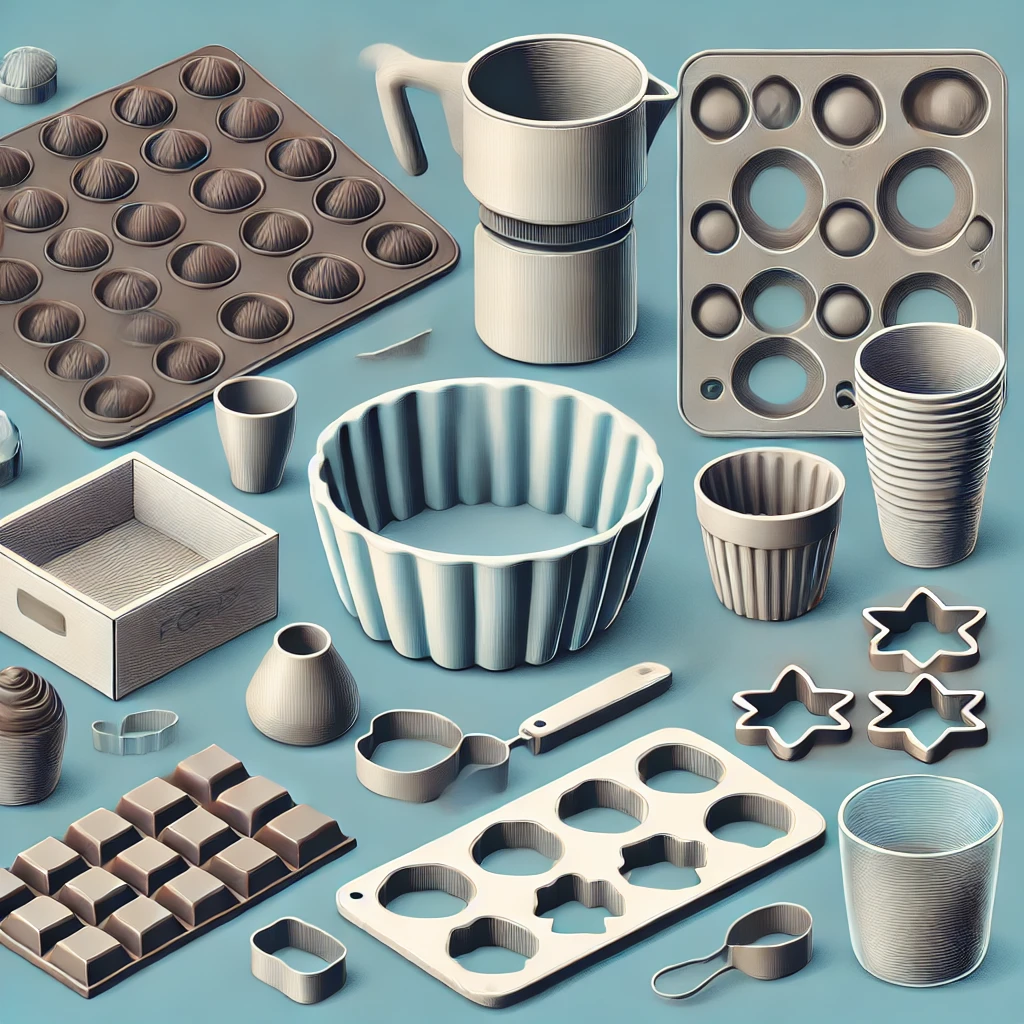Food-Safe Materials for Commodity 3D Printers: A Technical Exploration

3D printing has become an indispensable tool in prototyping, manufacturing, and even culinary innovation. However, ensuring food safety in 3D-printed items remains a complex challenge, especially for hobbyists and small-scale manufacturers using commodity printers. This article provides a comprehensive review of material options, hardware considerations, and post-processing methods for producing food-safe 3D-printed items.
The Challenges of Food-Safe 3D Printing
1. Porosity of Printed Surfaces
The fused deposition modeling (FDM) process inherently creates microscopic gaps and grooves due to its layer-by-layer deposition. These voids can harbor food particles and bacteria, making effective cleaning and sterilization nearly impossible without additional treatment.
2. Chemical Composition of Materials
Many common filaments, such as PLA and ABS, are not inherently food-safe due to:
- Pigments and Additives: These often contain non-food-grade dyes or plasticizers.
- Decomposition Products: ABS emits harmful fumes when heated, and its degradation products can be toxic.
- Lack of Certification: Most filaments lack FDA or equivalent food-contact certifications, making their safety claims unreliable.
3. Hardware Contamination
Consumer-grade 3D printers often use:
- Brass Nozzles: These may contain trace amounts of lead.
- Cross-Contamination Risks: Residual material from non-food-safe filaments can adhere to printer components and contaminate subsequent prints.
Citations:
- Gibson, I., Rosen, D. W., & Stucker, B. (2014). Additive Manufacturing Technologies. Springer.
- Torres, J., et al. (2015). Mechanical Property Optimization of FDM PLA in Z-axis Direction. Rapid Prototyping Journal.
Food-Safe Materials: A Comparative Analysis
| Material | Food-Safe Certification | Strength | Heat Resistance | Ease of Printing | Post-Processing Needs |
|---|---|---|---|---|---|
| PLA | Some formulations only | Moderate | Low (~60°C) | Easy | Requires sealing |
| PETG | Often certified | High | Moderate (~85°C) | Moderate | Minimal sealing needed |
| Nylon | Certain grades only | Very High | Moderate (~100°C) | Difficult | Requires sealing |
| Polycarbonate | Yes, FDA-grade available | Very High | High (~120°C) | Difficult | Requires precision |
PETG and Nylon stand out for their mechanical properties and resistance to chemical degradation. However, post-processing remains critical to achieve true food safety.
Citations:
- Hatchbox. (2023). Material Safety Data Sheet for PLA Filaments. Hatchbox Filaments.
- Simplify3D. (2023). Guide to Post-Processing 3D Prints for Food Safety. Simplify3D Knowledge Base.
Advanced Post-Processing Techniques for Food Safety
1. Surface Smoothing
- Method: Sanding (progressively finer grits) and buffing.
- Effectiveness: Reduces bacterial adherence by eliminating surface grooves.
- Example: Polished PETG utensil handles with epoxy coating for additional hygiene.
2. Food-Grade Epoxy Sealing
- Method: Apply a thin, uniform coat of FDA-approved epoxy.
- Effectiveness: Creates a non-porous barrier resistant to bacterial growth.
- Challenges: Added cost and curing time.
- Applications: Plates, bowls, and reusable containers.
3. Heat Treatment
- Method: Controlled annealing at temperatures just below material melting points.
- Effectiveness: Improves strength and smoothness but may cause dimensional changes.
- Example: Annealed PLA bowls with post-process epoxy.
4. Silicone Coating
- Applications: Ideal for molds and flexible utensils like spatulas.
5. Vapor Smoothing
- For ABS: Acetone vapor creates a sealed, glossy surface.
- For PLA: Ethyl acetate-based techniques are emerging as alternatives.
Real-World Applications and Industry Use Cases
1. Culinary Tools
- Example: Cookie cutters printed with food-safe PLA and sealed with epoxy.
- Considerations: Must withstand repeated washing without degrading.
2. Reusable Containers
- Example: PETG storage containers for dry goods.
- Advantage: Resistance to moisture and structural stability.
3. Medical Applications
- Example: Nylon pill counters or food-safe funnels used in laboratories.
4. Prototyping for Packaging
- Example: Early-stage models of sustainable food containers using polycarbonate.
Citations:
- American Society of Mechanical Engineers (ASME). (2021). 3D Printing in the Food Industry.
- Boeing Additive Manufacturing Team. (2019). Case Study: 3D Printing Prototypes.
Conclusion and Best Practices
Achieving food safety in 3D printing with commodity printers is challenging but possible through careful material selection, hardware modifications, and rigorous post-processing. While materials like PLA and ABS are unsuitable without treatment, options like PETG, Nylon, and polycarbonate provide viable paths when paired with appropriate coatings or sealing methods.